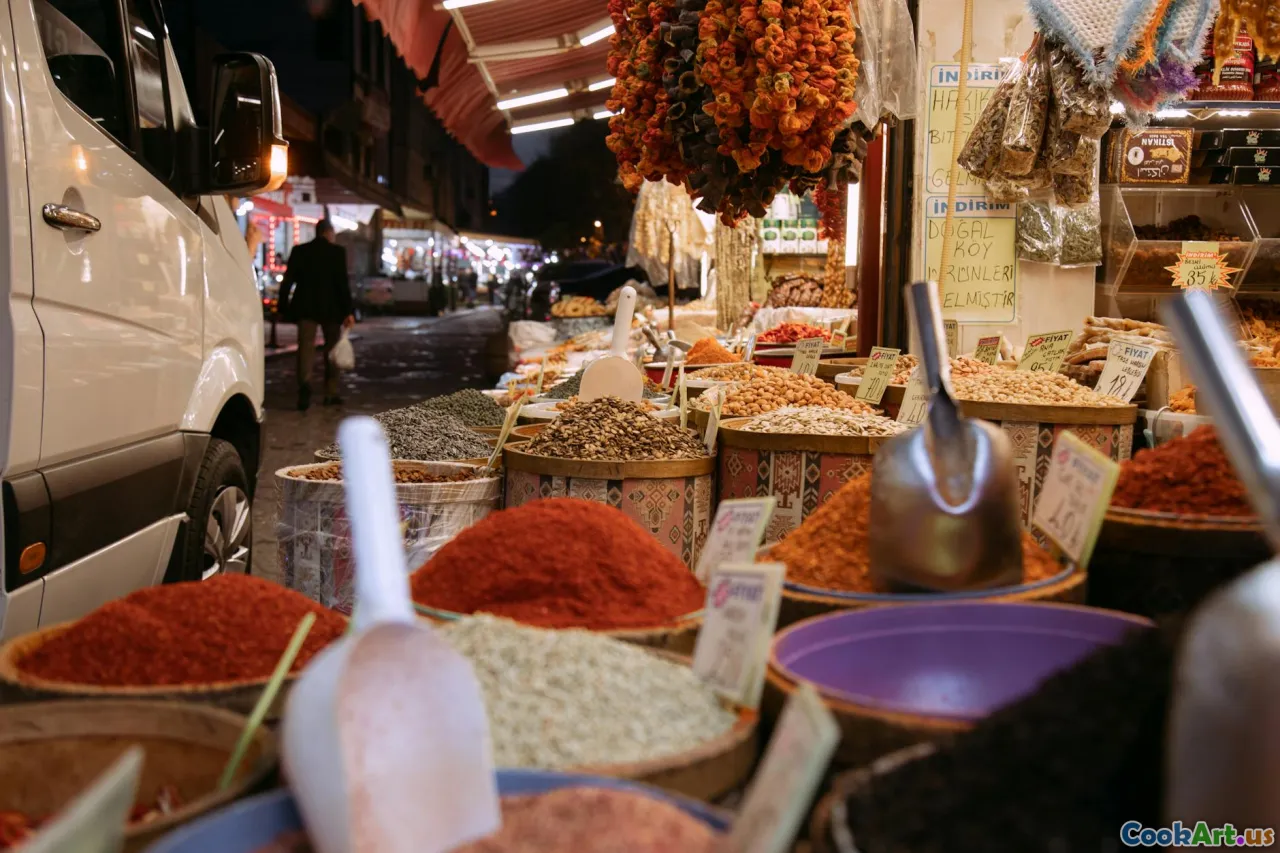Spices That Define Trinidadian Street Food
8 min read Discover the vibrant spices that infuse Trinidadian street food with bold flavors, cultural history, and sensory magic, capturing the island's soul. April 26, 2025 12:55
Spices That Define Trinidadian Street Food
Imagine strolling through the bustling streets of Port of Spain, where the air is thick with the tantalizing aroma of sizzling skewers, fried treats, and fragrant stews. Trinidad’s street food is a symphony of flavors, colors, and textures—each dish telling a story of history, cultural fusion, and community. At the very heart of this culinary mosaic lie the spices, the secret ingredients that elevate humble ingredients into unforgettable experiences.
The Cultural Tapestry and the Role of Spices
Trinidad’s history is a rich tapestry woven from African, Indian, European, and Indigenous influences. This melting pot is vividly reflected in its street food, where spices act as the unifying language. These spices are not just flavorings; they are expressions of identity, resilience, and tradition.
From the fiery heat of Scotch bonnet peppers to the aromatic warmth of cumin, each spice plays a crucial role. They transform simple ingredients—plantains, fried dough, or seasoned fish—into vibrant dishes bursting with flavor.
The Essential Spices of Trinidadian Street Food
1. **Cumin (Jeera)**Cumin is a cornerstone in Trinidadian cuisine, borrowed heavily from Indian culinary traditions. Its earthy, nutty aroma adds depth to curries, chutneys, and even seasoned meats.Personal Reflection: I vividly remember the first time I tasted a doubles vendor’s chutney—cumin’s warm, toasted scent beckoned me closer, promising a burst of flavor that didn’t disappoint.
2. Curry PowderA Trinidadian street food staple, curry powder is a vibrant blend of turmeric, coriander, cumin, fenugreek, and other spices. It lends a golden hue and a complex, layered flavor to everything from roti fillings to fried fish.Cultural Significance: The Indian indentured laborers who arrived in the 19th century brought curry traditions with them, which merged seamlessly into local street fare.
3. Allspice (Pimento)
Known locally as pimento, allspice has a warm, sweet, and slightly peppery flavor. It’s essential in seasoning marinated meats and adding depth to stews like pelau—a one-pot rice and meat dish.
4. Scotch Bonnet PepperThis fiery pepper is Trinidad’s signature heat. Its fruity, spicy aroma is unmistakable and is responsible for the signature heat in dishes like jerk chicken and pepper sauces.Note: Handling Scotch bonnet requires caution—gloves are recommended, as the heat lingers long after the meal.
5. Turmeric
Turmeric’s earthy, slightly bitter flavor and vibrant yellow color are fundamental. It’s often used in curries and rice dishes, imparting not just flavor but also a visual vibrancy.
6. Ginger
Fresh ginger adds a zesty, pungent kick that balances rich flavors. It’s often used in marinades, drinks, and even some snack seasonings.
7. Fenugreek
A key ingredient in curry powders, fenugreek adds a slightly sweet, nutty aroma that complements the other spices.
How Spices Shape Iconic Trinidadian Street Foods
Doubles
Arguably Trinidad’s most famous street snack, doubles consist of two pieces of fried flatbread (bara) filled with curried chickpeas (channa). The magic lies in the spicy, tangy chutney and pepper sauce, both heavily seasoned with cumin, turmeric, and Scotch bonnet peppers. The aroma of spices in doubles is intoxicating, drawing crowds day and night.
Fried Fish and Bake
Fresh fish seasoned with a blend of cumin, curry powder, and pimento is fried to crispy perfection. Served with a side of soft, pillowy bake—an Indian-inspired bread—the dish’s flavor profile is elevated by the aromatic spices that seep into the crispy exterior.
Pelau
This one-pot rice dish combines seasoned meats, pigeon peas, and caramelized sugar, finished with a sprinkle of allspice and a dash of turmeric. The result is a smoky, savory, and slightly sweet flavor, with spices infusing every bite.
Bake and Shark
A popular beachside snack, bake (fried dough) is topped with seasoned shark fillet, often garnished with spicy pepper sauce and tangy chutney—again emphasizing the bold use of local spices.
Personal Insights and Cultural Reflections
Growing up in Trinidad, I learned early that spices are more than just ingredients—they are the heartbeat of our street food culture. Each vendor has their own secret blend, passed down through generations, making every bite a unique experience.
The vibrant spice markets—like the one in San Fernando—are sensory paradises. The air is thick with the scent of roasted cumin, toasted pimento, and fiery Scotch bonnet peppers. These markets are where history and flavor collide, and they offer a glimpse into the soul of Trinidad.
The Emotional and Social Connection
Spices in Trinidadian street food are a bridge—connecting past and present, tradition and innovation. They evoke memories of family gatherings, celebrations, and everyday life. Sharing a plate of doubles or a fried fish snack isn’t just about sustenance; it’s about community, identity, and resilience.
Final Thoughts
The next time you indulge in Trinidad’s street food, take a moment to appreciate the symphony of spices that make each dish extraordinary. Whether it’s the fiery kick of Scotch bonnet or the warm aroma of cumin and turmeric, these spices craft a culinary narrative that’s as vibrant and diverse as the island itself.
In every bite, there’s a story—a history of migration, adaptation, and cultural pride. Trinidadian street food is more than just a feast for the senses; it’s a celebration of resilience, heritage, and the unyielding spirit of the Caribbean.
Embark on this flavorful journey and let the spices of Trinidad inspire your culinary adventures!









